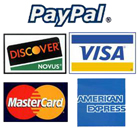Going Global: Promoting Your Website to the International Marketplace
by Chris Robertson
Only a generation ago, international markets were beyond the reach of all but the largest and most influential companies. Most small- to medium-sized businesses were restricted to selling locally, or at most, nationally. Smaller businesses with big ambitions typically had to either employ salespeople in foreign lands or print and mail expensive catalogues. Either way, it was hard to make a solid return on investment.
The Dawn of the Internet
In the early days of the Internet, the face of commerce began to shift, but companies still ran up against a variety of technological obstacles in their efforts to reach beyond their borders. Website design was in its infancy, as were ecommerce solutions like online shopping carts. Server space was at a premium, and limitations in electronic communication often meant increased overhead to fulfill international orders. The biggest problem, however, was that potential customers weren’t online in numbers large enough to make online commerce truly feasible.
Ramping Up Accessibility
My, how times have changed. Faster processors, affordable servers, and ingenious software have made ecommerce possible for companies of every size. Moreover, the wide availability of high-speed Internet access has opened the floodgates of customers, who are increasingly eager to shop for goods and services online. While small- and medium-sized businesses will never be on equal footing with Fortune 500 companies, their ability to penetrate the marketplace is unprecedented. They’re no longer relegated to pushing their wares locally or even nationally; instead they have the potential to have a truly global reach.
Taking the First Steps
While the Internet gives you the capability to expand beyond geographical borders, when and how should you do so? Your readiness to move into the global marketplace is predicated upon affirmative answers to questions like, “Are my products or services attractive to customers in other countries?” “Will I incur greater overhead for serving a larger market, and if so, where can I shift those costs?”
Choosing Your Niches
Once you’ve decided to make the move, but before you implement your plans, it’s critical to decide where your resources are best spent. Considerations include:
Supply and Demand: If you sell widgets that are highly sought after in another country, but that country doesn’t have a domestic supplier of your widgets, you can carve out a healthy market in that country. In contrast, it’s probably not a great idea to target France as a market for croissants imported from the U.S.
Currency Trends: If you’re a U.S.-based business and the dollar is weak against another country’s currency, that country’s citizens can get more bang for their proverbial buck. When the dollar is down, customers in other countries are more prone to shop for bargains from companies in the U.S. When the dollar is up, U.S.-based companies should be more selective in their target markets, while non-U.S. companies can make a bundle from Americans.
Political Stability: Depending on the type of product or service you offer, the type of payment processing you provide, and whether or not you ship good to your customers, you may have to take political issues into consideration. For example, if you have to ship your widgets to your customers, you may need to overlook otherwise desirable customers who live in a politically unstable country with only intermittent postal delivery.
Emerging Markets: When making your considerations, don’t overlook increasingly prosperous emerging markets. Often the biggest companies will avoid marketing to countries that aren’t yet considered “first tier,” since they’re looking for volume sales and market penetration. That leaves an entire sphere of influence that is yours for the taking.
International Marketing Strategies
Once you’ve decided which countries will be receptive to your products or services, it’s imperative that you put a marketing plan into place that will help you reach your targeted customers.
Marketing your website can be accomplished through a number of different but important and well known strategies. You may wish to conduct email marketing campaigns to reach your targeted audience. Also from a search engine point of view, all companies with a web site presence need to ensure that their website has search engine marketing. By having plenty of web links pointing to your website, these back links will help your website get much better search engines positions for important keywords that are relevant to your business. Building back links to your website is a crucial step to attain online success. Perhaps one of the most beneficial ways for a company to get their products and services exposed nationally and internationally is to distribute a press release to all the important and targeted media contacts about your globalization efforts. Selling products and services through the web can also be enhanced by buying targeted traffic and attaining website visibility from domain name redirect click through popad technology.
Do keep in mind that, if you undertake the important strategies outlined here, that will enable your web site to rise in Google’s search engine rankings. Your site is also likely to do well in most other countries. For example, Google has a higher market share in Germany than it does in the U.S. The bottom line is that, if you do Internet marketing for a U.S.-based site, the effect will be felt across the globe. Your job is to make sure that your site is inviting to those who are in your international target market.
Cultural Considerations
When you’re reaching out to potential customers in a new country, it’s important to take cultural differences into account. If you’re based in the U.S., you may need to translate your website into another language. If that’s the case, make sure to engage the services of a professional translator. On the other hand, English is taught as a second language in many countries, so an English-only site may be fine. If you stick to English, however, ensure that you don’t use any figures of speech that are specific to an American knowledge base. For example, someone from another country might not know that a “slam dunk” is a sure thing.
In the same vein, you should be sensitive to other cultural differences, such as gender roles, symbols, colors, and images. You may want to study market research in your target country in order to pinpoint elements of your site that might be misinterpreted, as well as to ensure that the type of sales message you convey will work with your new target audience.
More than at any other time in history, the global marketplace is open to companies of all sizes. In the borderless world of the Internet, you can expand your horizons and carve out new markets that will put you head and shoulders above your competitors.
Chris Robertson is a content writer for Majon International. Majon International is a well know internet marketing and search engine marketing company that is widely regarded as one of the MOST POPULAR marketing and advertising companies on the internet.
Visit: Majon's Business and Entrepreneur Marketlace | Majon's Business and Entrepreneur Article Directory | WebSite Marketing Pro | Majon International | Search Engine Marketing Blog







